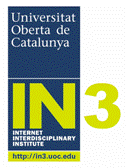The problem in the eye of the beholder: Working with gender reforms in computer engineering

Abstract
The article investigates problems in making computer engineering education more gender-inclusive. The two models which have been used to explain the dearth of women in computer engineering education are presented. The first one, mainly used by computer engineering faculty as a basis for a number of measures designed to recruit more women, is based on gender differences among students. The second one, mainly used by gender researchers, is based on an examination of the educational and cultural context of computer engineering education, and in particular its underlying values and ethos. With its starting point in the gender research model, the article discusses the difficulties of cooperation between gender researchers and engineering faculty in relation to working together on the problem of few women in computer engineering education. In addition to differences in perspective, additional issues such as language and status differences are discussed.
Keywords
engineering education, disciplinary cultures, educational reform, engineering culture, gender and ICT.
Author Biography
Minna Salminen-Karlsson
Associate professor, Centre of Gender Research